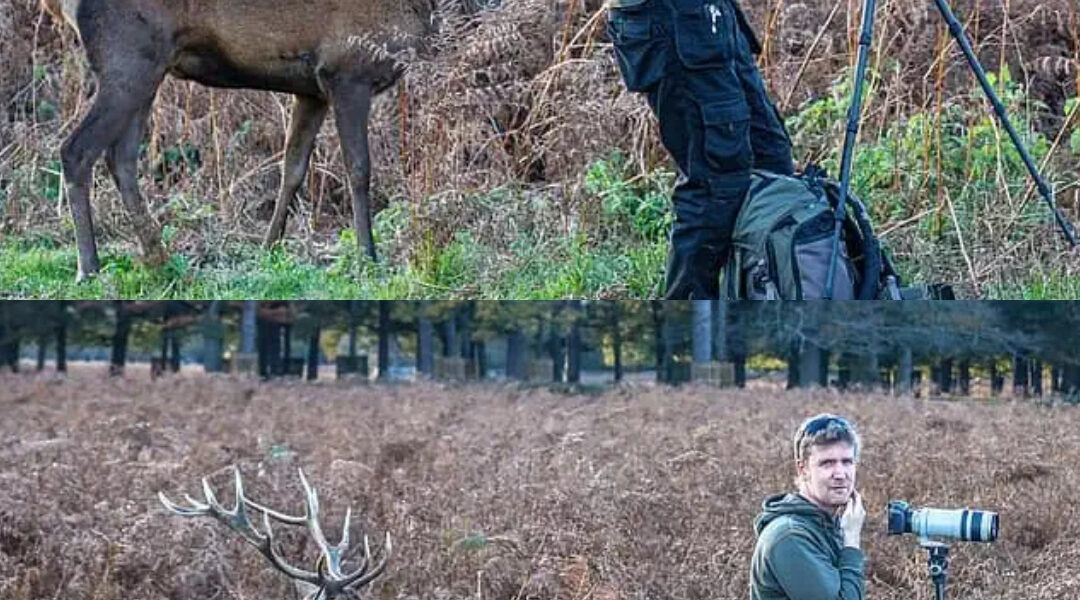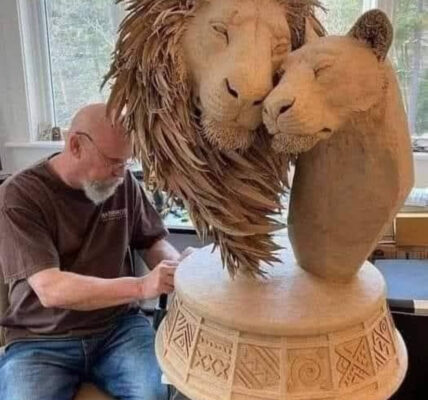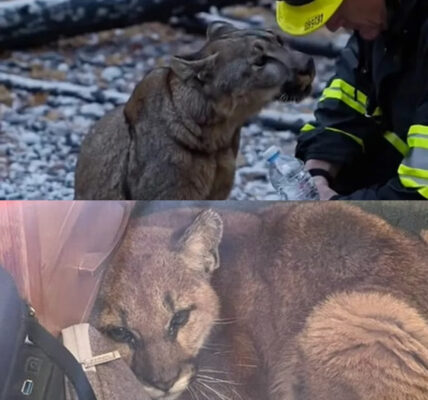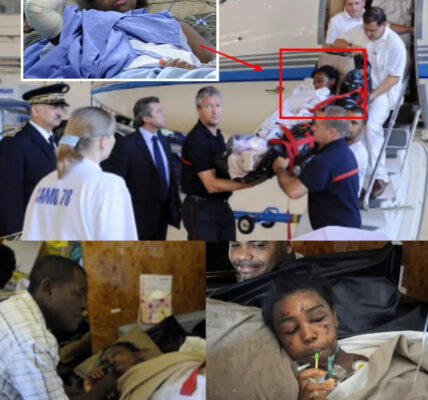The morning light in London’s Bushy Park was soft and golden—the kind that makes everything shimmer as if painted by patience. It was rutting season, the time of year when red deer stags bellow through the mist, clashing antlers in a show of strength and majesty. For photographers, it was paradise. Every corner of the park seemed alive with motion and sound, every breath a chance at capturing the perfect frame.

Among those who came that morning was an amateur photographer—his camera slung over his shoulder, his eyes scanning the horizon. To him, the world narrowed into the viewfinder of his long-lens camera. Each click was a step closer to what he imagined would be the photograph of the day.
But as fate would have it, the most extraordinary moment wasn’t out in the distance. It was standing quietly—just a few feet behind him.
The Watcher Behind the Lens
Not far away, veteran wildlife photographer Roger Clark, age seventy-five, was also out early, hoping to document the park’s annual spectacle. Over the decades, Clark had learned that nature rewards silence and observation more than pursuit. Sometimes, the best shot is the one you don’t chase—it’s the one that finds you.
Through his binoculars, Clark spotted the amateur kneeling near a patch of ferns, adjusting his lens toward the horizon. At first, it was a typical scene—photographers lost in their own world of focus and framing.
Then Clark noticed something peculiar.
Out of the ferns behind the man rose the magnificent crown of antlers—broad, symmetrical, and glinting in the sunlight. A full-grown red stag stood there, so close that its breath stirred the grass at the photographer’s heels.
The man never noticed.
An Unbelievable Scene
Clark froze, his seasoned instincts warring with disbelief. The stag was calm—curious, even. It lowered its head slightly, sniffing the air, perhaps intrigued by the stranger kneeling in its domain. The scene looked almost comical: a wild animal of immense power and grace standing inches behind someone who had no idea it was there.
Clark raised his camera and whispered to himself, “You can’t make this up.”
From where he stood, the perspective was perfect. The stag appeared to be leaning over the man’s shoulder, as if reading the camera settings—or worse, attempting to pickpocket his jeans. Clark pressed the shutter. The click echoed softly across the ferns, freezing the surreal moment forever.
The composition was perfect—light, symmetry, and irony all in one frame.
The Moment Passes

A few seconds later, the stag’s ears flicked. It turned its head toward Clark, its eyes catching the glint of the lens. For a brief, timeless instant, it seemed to understand the absurdity of the scene—how this human, so eager to capture nature, had failed to notice it standing right there.
Then, with quiet grace, the stag stepped backward into the green, its massive antlers disappearing among the ferns. The amateur photographer remained still, oblivious. His lens was still aimed toward the far meadow, chasing a different shot entirely.
Clark chuckled softly to himself. “If only he knew,” he whispered.
A Missed Masterpiece

Later, Clark would recall the scene with a mix of amusement and awe. “The whole thing was almost poetic,” he said. “Here was this man searching for beauty in the distance, while the very essence of it stood right behind him. He was looking too far ahead to see what was near.”
The image he captured became something of a legend among photographers—a reminder that sometimes the wildest wonders happen in the periphery. The irony was both gentle and profound: in the pursuit of perfection, we often miss the miracle right beside us.
Nature’s Sense of Humor
There was something deeply human about that morning in Bushy Park. The photographer’s unawareness, the stag’s quiet curiosity, the old professional’s amused wisdom—it all wove together into a scene that was equal parts comedy and philosophy.
Perhaps the stag’s retreating glance said it best. “Your model is right behind you,” its eyes seemed to say. “Am I not good enough for your picture?”
The world, it seemed, had paused for a joke only nature could tell.
The Lesson in the Lens

Clark never learned the name of the man who missed the shot. By the time he packed up his gear and left, the amateur had moved on, still chasing light and motion in the fields beyond. But for Clark—and everyone who later saw the photograph—the message was clear:
In the age of focus, sometimes we forget to see.
Wildlife photography isn’t just about equipment or skill. It’s about awareness—the stillness to notice the extraordinary in the ordinary, the patience to see beyond the frame.
That morning, two photographers walked the same path. One came away with hundreds of shots of distant deer. The other came away with a single image that spoke louder than any photograph could.
The Shot That Spoke Volumes
When Clark later shared the image, people laughed, marveled, and sighed all at once. The photo—simple yet profound—captured not only a majestic animal but also a quiet truth about life itself.
Sometimes we’re so intent on chasing something far away that we fail to recognize what’s right beside us—beauty, grace, or even wonder breathing down our necks, waiting to be seen.
As Roger Clark packed up that day and walked through the soft rustle of ferns, he glanced back once more at the open field. The amateur was still out there, camera in hand, focused on something in the distance.
Clark smiled.
In the end, maybe that’s what makes wildlife photography so magical—it’s not about controlling nature, but about letting it surprise you.
Because in Bushy Park that morning, the wild didn’t just offer a photo—it offered a lesson.
And though one man missed his shot, another captured something far greater: proof that the world’s most extraordinary moments often happen just behind us, quietly waiting for us to turn around.




